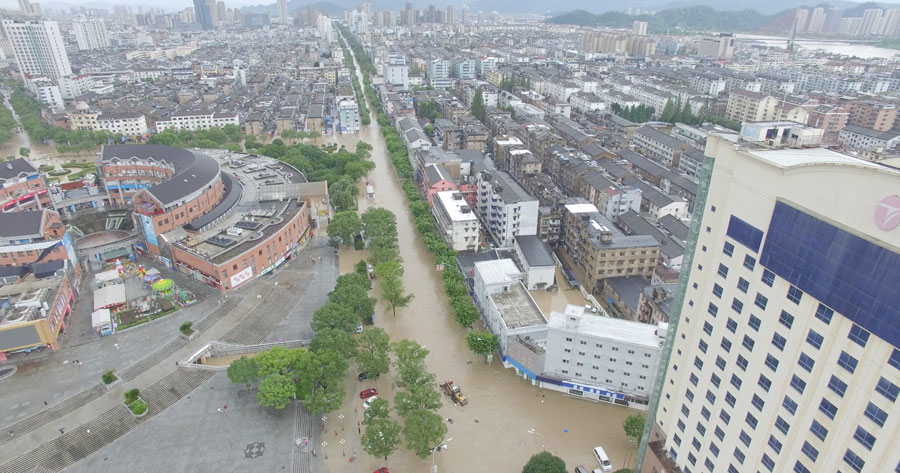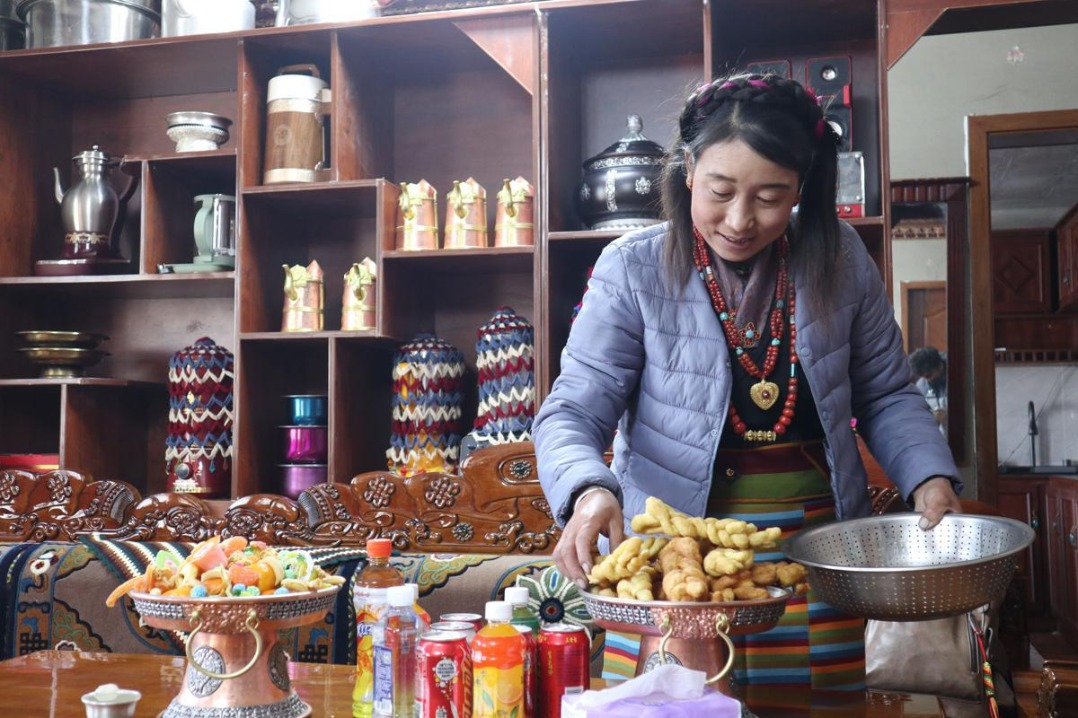Typhoon puts scientists and residents to the test






Shanghai and southeastern areas meeting challenge
At 2 pm on Sunday, nearly all the residents and business owners on a street in Linhai, Zhejiang province, were busy with the same task.
They were cleaning up their homes and shops on Ziyang Old Street after a frightening night of heavy winds, rain and flooding caused by Typhoon Lekima.
Some people pulled their wooden beds, complete with sodden mattresses, into the street to dry in the afternoon sun, while others were busy tending to their walls or wooden floors.
The owner of a noodle shop on the street said, "We made some preparations before the typhoon made landfall, such as moving the refrigerator and other electrical appliances to higher places, but we never expected the amount of rainfall it brought."
Linhai is about a four-hour drive from Shanghai, and Ziyang Old Street has long been known for its cobblestone sidewalks that wind their way past two-story buildings from the Ming Dynasty (1368-1644) and Qing Dynasty (1644-1911) and homes decorated with stone carvings and gray tiles.
The street is a must-visit attraction for tourists to the old part of Linhai, which sits near the Lingjiang River.
On Saturday night, residents battled floods that breached the 1,500-year-old city wall and rose to a height of 1.5 meters.
The flooding was so severe that police and rescue authorities issued an online emergency appeal for boats to be used to evacuate those affected.
Lekima, the strongest typhoon to hit the Chinese mainland so far this year, wrought havoc in the old area of Linhai, killing four people and leaving three missing.
Yang Li, who lives in the old area, said she had stocked up on batteries to charge her mobile phone, along with food and water. As the floodwater gradually rose and flowed down the street on Saturday morning, she stayed in her second-floor room.
"The water flooded in at about 4 or 5 pm, rising above the stairway on the second floor, where we were stranded," Yang told Beijing News.
She and her neighbor were evacuated on Sunday morning by firefighters using boats.
By 7 am on Monday, Lekima had damaged more than 234,000 hectares of crops and 41,000 homes in the province, with direct economic losses amounting to 24.22 billion yuan (about $3.4 billion).
By noon on Sunday, the flooding in Linhai had gradually receded, with the water level dropping by 30 to 50 centimeters from its peak.
"Linhai has long been prone to flooding, especially during the rainy season," Wang Dan, the city's mayor, told the media on Sunday.
Wang said that at 3 pm on Saturday, the Lingjiang River outside the city wall was rising rapidly, reaching as high as 10 meters and greatly exceeding the capacity of the wall's sluice gate.
Construction of the wall, which stretches for 6,000 meters, began in the Jin Dynasty (265-420) and was completed during the Tang Dynasty (618-907).
Today, tourists flock to Linhai to explore the wall and the well-preserved ancient area it was built to protect. For more than 1,000 years, the wall offered protection against raiders.
It's no coincidence that the wall, which runs alongside the Lingjiang River, looks like the Great Wall in Beijing.
Ming Dynasty general Qi Jiguang heightened and widened the Jiangnan (South of the Yangtze River) Great Wall and had the idea to build two-story towers. He later did the same at the Great Wall in northern China, including at Badaling and Mutianyu in Beijing. Qi was sent to Beijing after being promoted.
Wang said: "These ancient walls were designed to resist ordinary (once-in-a-decade) floods. Linhai has not encountered such severe flooding in the past 50 years or so."
She added that it was "extremely rare" that the flooding at the weekend had breached the Wangjiangmen Gate on the ancient wall, inundating the old area of the city.
Rescue workers attempted to better protect the wall and keep the flooding at bay.
By 10 pm on Sunday, the flooding had gradually subsided, with the level of the Lingjiang River dropping to 4.4 meters.
Han Shengfang, who has run a small shop on Ziyang Old Street for seven years, told Zhejiang Daily: "It may still take three days before I can reopen my shop, but it doesn't matter. In the end, we will have endured and conquered a great storm."




















